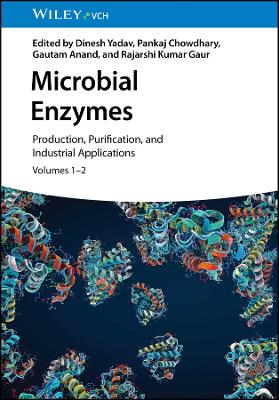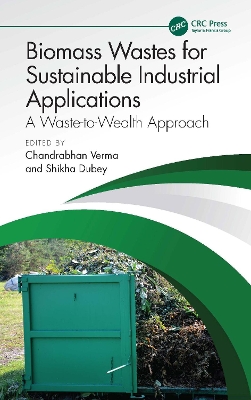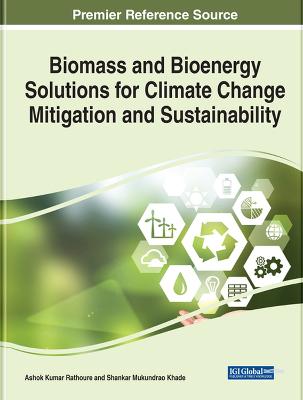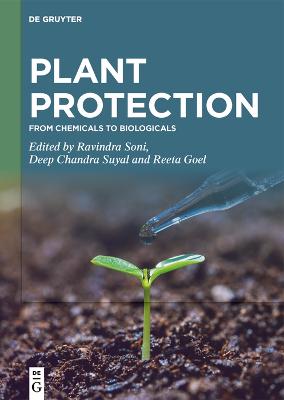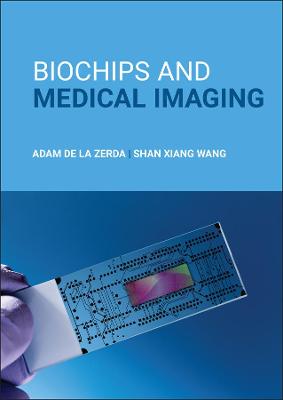Nature-Inspired Structured Functional Surfaces
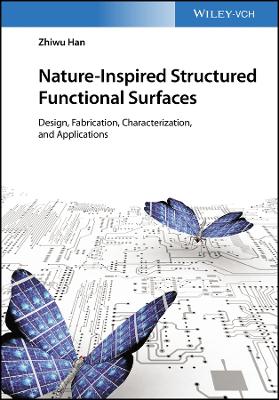 portes grátis
portes grátis
Nature-Inspired Structured Functional Surfaces
Design, Fabrication, Characterization, and Applications
Han, Zhiwu
Wiley-VCH Verlag GmbH
08/2022
320
Dura
Inglês
9783527350216
15 a 20 dias
758
Descrição não disponível.
Preface
1 Introduction of bio-inspired Structure Surfaces
1.1 Bionics is boosting advanced materials
1.2 Bio-inspired structural surfaces(BSS)
1.2.1 Definition and classification of BSS
1.2.2 Typical prototypes with structural surfaces
1.3 Characterization techniques and analysis methods of BSS
1.3.1 Preparation of biological prototypes
1.3.2 Characterization techniques of BSS
1.3.3 Analysis methods of BSS
1.4 Modeling and simulation methods of assistant bionic design
1.4.1 Translight method
1.4.2 FDTD method
1.4.3 Other modeling related methods
1.5 Design principles and fabrication methods of BSS
1.5.1 Design principles of BSS
1.5.2 Fabrication methods of BSS
1.5.3 Synthetic design and fabrication strategies of BSS
2 Bio-inspired antireflective (AR) surfaces
2.1 Definition and classification of AR materials
2.1.1 Antireflective coatings (ARCs)
2.1.2 Antireflective structures (ARSs)
2.1.3 Comprehensive comparison between ARCs and ARSs
2.2 Light trapping AR surfaces inspired by butterfly wings
2.2.1 AR mechanism of original butterfly wings
2.2.2 Fabrication of structural butterfly-inspired AR surfaces
2.2.3 Characterizations of butterfly-inspired AR surfaces
2.2.4 AR performance of butterfly-inspired structural surfaces
2.2.5 AR mechanism of butterfly-inspired structural surfaces
2.3 Transparent AR surfaces inspired by cicada wings
2.3.1 AR mechanism of original cicada wings
2.3.2 Fabrication of cicada-inspired AR surfaces
2.3.3 Characterizations of cicada-inspired AR surfaces
2.3.4 AR performance of cicada-inspired structural surfaces
2.3.5 AR mechanism of cicada-inspired structural surfaces
3 Bio-inspired antifogging (AF) surfaces
3.1 Wettability-induced AF theories
3.1.1 Smooth surfaces: Young model and the static contact angle
3.1.2 Wenzel model
3.1.3 Cassie-Baxter model
3.2 Dynamic wettability: Contact angle hysteresis and sliding angles
3.3 Definition and classification of AF surfaces
3.3.1 Superhydrophilic AF surfaces
3.3.2 Superhydrophobic AF surfaces
3.4 AF surfaces inspired by butterfly wings
3.4.1 Characterizations and analysis of original AF butterfly wings
3.4.2 Fabrication of butterfly-inspired AF surfaces
3.4.3 Characterizations and analysis of biomimetic AF monolayer film (BMF)
3.4.4 AF performance of butterfly-inspired MHPSs surfaces
3.4.5 AF mechanism of butterfly-inspired MHPSs surfaces
3.5 Structural AF surfaces inspired by mayfly compound eyes
3.5.1 AF mechanism of original compound eyes
3.5.2 Fabrication of superhydrophobic antifogging surfaces (SSASs)
3.5.3 Wettability and composition analysis of the SSASs
3.5.4 AF performance of the SSASs
3.5.5 AF mechanism of the SSASs
4 Structure color surfaces inspired by butterfly wings
4.1 Definition of structure color surfaces
4.2 Structure color surfaces on butterfly wings
4.2.1 Papilio palinurus butterfly wings
4.2.2 Morpho butterfly wings
4.3 Fabrication of the butterfly-inspired structure color materials
4.3.1 Sol-gel process
4.3.2 Soft lithography
4.3.3 Layer deposition techniques
4.3.4 Electron beam lithography
4.4 Applications of the structure color materials
5 Bio-inspired oil-water separation materials
5.1 Definition and classification of oil-water separation materials
5.1.1 Superhydrophobic-oleophilic materials
5.1.2 Underwater superoleophobic materials
5.1.3 Superhydrophilic-superoleophobic materials
5.1.4 Smart materials with switchable wettability
5.2 Oil-water separation materials inspired by butterfly wings
5.2.1 Characterizations of original butterfly wings
5.2.2 Design principle for butterfly-based oil-water separation materials
5.2.3 Fabrication of butterfly-inspired oil-water separation materials
5.2.4 Characterizations of butterfly-inspired oil-water separation materials
5.2.5 Performance of butterfly-inspired oil-water separation materials
5.3 Oil-water separation materials inspired by fish scales
5.3.1 Underwater superoleophobic performance on fish scales
5.3.2 Biomimetic design strategy for oil-water separation materials
5.3.3 Fabrication of fish-inspired oil-water separation materials
5.3.4 Characterizations of fish-inspired oil-water separation materials
5.3.5 Oil-water separation evaluation of fish-inspired structural materials
6 Bio-inspired responsive surfaces toward multiple organic vapors
6.1 Responsive performance of Morpho butterfly wings
6.1.1 Vapor responsive platform for responsive measurements
6.1.2 Responsive mechanism of butterfly wings toward incident angles
6.1.3 3D visible parameterized models of butterfly feature structures
6.2 Fabrication of butterfly-inspired structural responsive surfaces
6.3 Characterizations of butterfly-inspired structural responsive surfaces
6.3.1 Morphology characterizations
6.3.2 Composition characterizations
6.4 Responsive performance of BSS towards multiple organic vapors
6.4.1 Reflective spectra of BSS toward organic vapors
6.4.2 Responsive evaluation based on introduced sensitive corner
6.4.3 Responsive mechanism of the BSS
7 Prospect and Outlook
Index
1 Introduction of bio-inspired Structure Surfaces
1.1 Bionics is boosting advanced materials
1.2 Bio-inspired structural surfaces(BSS)
1.2.1 Definition and classification of BSS
1.2.2 Typical prototypes with structural surfaces
1.3 Characterization techniques and analysis methods of BSS
1.3.1 Preparation of biological prototypes
1.3.2 Characterization techniques of BSS
1.3.3 Analysis methods of BSS
1.4 Modeling and simulation methods of assistant bionic design
1.4.1 Translight method
1.4.2 FDTD method
1.4.3 Other modeling related methods
1.5 Design principles and fabrication methods of BSS
1.5.1 Design principles of BSS
1.5.2 Fabrication methods of BSS
1.5.3 Synthetic design and fabrication strategies of BSS
2 Bio-inspired antireflective (AR) surfaces
2.1 Definition and classification of AR materials
2.1.1 Antireflective coatings (ARCs)
2.1.2 Antireflective structures (ARSs)
2.1.3 Comprehensive comparison between ARCs and ARSs
2.2 Light trapping AR surfaces inspired by butterfly wings
2.2.1 AR mechanism of original butterfly wings
2.2.2 Fabrication of structural butterfly-inspired AR surfaces
2.2.3 Characterizations of butterfly-inspired AR surfaces
2.2.4 AR performance of butterfly-inspired structural surfaces
2.2.5 AR mechanism of butterfly-inspired structural surfaces
2.3 Transparent AR surfaces inspired by cicada wings
2.3.1 AR mechanism of original cicada wings
2.3.2 Fabrication of cicada-inspired AR surfaces
2.3.3 Characterizations of cicada-inspired AR surfaces
2.3.4 AR performance of cicada-inspired structural surfaces
2.3.5 AR mechanism of cicada-inspired structural surfaces
3 Bio-inspired antifogging (AF) surfaces
3.1 Wettability-induced AF theories
3.1.1 Smooth surfaces: Young model and the static contact angle
3.1.2 Wenzel model
3.1.3 Cassie-Baxter model
3.2 Dynamic wettability: Contact angle hysteresis and sliding angles
3.3 Definition and classification of AF surfaces
3.3.1 Superhydrophilic AF surfaces
3.3.2 Superhydrophobic AF surfaces
3.4 AF surfaces inspired by butterfly wings
3.4.1 Characterizations and analysis of original AF butterfly wings
3.4.2 Fabrication of butterfly-inspired AF surfaces
3.4.3 Characterizations and analysis of biomimetic AF monolayer film (BMF)
3.4.4 AF performance of butterfly-inspired MHPSs surfaces
3.4.5 AF mechanism of butterfly-inspired MHPSs surfaces
3.5 Structural AF surfaces inspired by mayfly compound eyes
3.5.1 AF mechanism of original compound eyes
3.5.2 Fabrication of superhydrophobic antifogging surfaces (SSASs)
3.5.3 Wettability and composition analysis of the SSASs
3.5.4 AF performance of the SSASs
3.5.5 AF mechanism of the SSASs
4 Structure color surfaces inspired by butterfly wings
4.1 Definition of structure color surfaces
4.2 Structure color surfaces on butterfly wings
4.2.1 Papilio palinurus butterfly wings
4.2.2 Morpho butterfly wings
4.3 Fabrication of the butterfly-inspired structure color materials
4.3.1 Sol-gel process
4.3.2 Soft lithography
4.3.3 Layer deposition techniques
4.3.4 Electron beam lithography
4.4 Applications of the structure color materials
5 Bio-inspired oil-water separation materials
5.1 Definition and classification of oil-water separation materials
5.1.1 Superhydrophobic-oleophilic materials
5.1.2 Underwater superoleophobic materials
5.1.3 Superhydrophilic-superoleophobic materials
5.1.4 Smart materials with switchable wettability
5.2 Oil-water separation materials inspired by butterfly wings
5.2.1 Characterizations of original butterfly wings
5.2.2 Design principle for butterfly-based oil-water separation materials
5.2.3 Fabrication of butterfly-inspired oil-water separation materials
5.2.4 Characterizations of butterfly-inspired oil-water separation materials
5.2.5 Performance of butterfly-inspired oil-water separation materials
5.3 Oil-water separation materials inspired by fish scales
5.3.1 Underwater superoleophobic performance on fish scales
5.3.2 Biomimetic design strategy for oil-water separation materials
5.3.3 Fabrication of fish-inspired oil-water separation materials
5.3.4 Characterizations of fish-inspired oil-water separation materials
5.3.5 Oil-water separation evaluation of fish-inspired structural materials
6 Bio-inspired responsive surfaces toward multiple organic vapors
6.1 Responsive performance of Morpho butterfly wings
6.1.1 Vapor responsive platform for responsive measurements
6.1.2 Responsive mechanism of butterfly wings toward incident angles
6.1.3 3D visible parameterized models of butterfly feature structures
6.2 Fabrication of butterfly-inspired structural responsive surfaces
6.3 Characterizations of butterfly-inspired structural responsive surfaces
6.3.1 Morphology characterizations
6.3.2 Composition characterizations
6.4 Responsive performance of BSS towards multiple organic vapors
6.4.1 Reflective spectra of BSS toward organic vapors
6.4.2 Responsive evaluation based on introduced sensitive corner
6.4.3 Responsive mechanism of the BSS
7 Prospect and Outlook
Index
Este título pertence ao(s) assunto(s) indicados(s). Para ver outros títulos clique no assunto desejado.
Bionic engineering; nature-inspired; bionics; biomimetics; biomimics; bionics design; biomimetic design; nature-inspired materials; surface engineering; antireflection structures; light trapping structures; antireflective surfaces; antifogging materials; structure color; oil-water separation materials; vapor responsive surfaces; bioinspired synthetic and fabrication; nature-inspired characterization; biology characteristic; surface structure characterization; surface analysis method; materials structure design
Preface
1 Introduction of bio-inspired Structure Surfaces
1.1 Bionics is boosting advanced materials
1.2 Bio-inspired structural surfaces(BSS)
1.2.1 Definition and classification of BSS
1.2.2 Typical prototypes with structural surfaces
1.3 Characterization techniques and analysis methods of BSS
1.3.1 Preparation of biological prototypes
1.3.2 Characterization techniques of BSS
1.3.3 Analysis methods of BSS
1.4 Modeling and simulation methods of assistant bionic design
1.4.1 Translight method
1.4.2 FDTD method
1.4.3 Other modeling related methods
1.5 Design principles and fabrication methods of BSS
1.5.1 Design principles of BSS
1.5.2 Fabrication methods of BSS
1.5.3 Synthetic design and fabrication strategies of BSS
2 Bio-inspired antireflective (AR) surfaces
2.1 Definition and classification of AR materials
2.1.1 Antireflective coatings (ARCs)
2.1.2 Antireflective structures (ARSs)
2.1.3 Comprehensive comparison between ARCs and ARSs
2.2 Light trapping AR surfaces inspired by butterfly wings
2.2.1 AR mechanism of original butterfly wings
2.2.2 Fabrication of structural butterfly-inspired AR surfaces
2.2.3 Characterizations of butterfly-inspired AR surfaces
2.2.4 AR performance of butterfly-inspired structural surfaces
2.2.5 AR mechanism of butterfly-inspired structural surfaces
2.3 Transparent AR surfaces inspired by cicada wings
2.3.1 AR mechanism of original cicada wings
2.3.2 Fabrication of cicada-inspired AR surfaces
2.3.3 Characterizations of cicada-inspired AR surfaces
2.3.4 AR performance of cicada-inspired structural surfaces
2.3.5 AR mechanism of cicada-inspired structural surfaces
3 Bio-inspired antifogging (AF) surfaces
3.1 Wettability-induced AF theories
3.1.1 Smooth surfaces: Young model and the static contact angle
3.1.2 Wenzel model
3.1.3 Cassie-Baxter model
3.2 Dynamic wettability: Contact angle hysteresis and sliding angles
3.3 Definition and classification of AF surfaces
3.3.1 Superhydrophilic AF surfaces
3.3.2 Superhydrophobic AF surfaces
3.4 AF surfaces inspired by butterfly wings
3.4.1 Characterizations and analysis of original AF butterfly wings
3.4.2 Fabrication of butterfly-inspired AF surfaces
3.4.3 Characterizations and analysis of biomimetic AF monolayer film (BMF)
3.4.4 AF performance of butterfly-inspired MHPSs surfaces
3.4.5 AF mechanism of butterfly-inspired MHPSs surfaces
3.5 Structural AF surfaces inspired by mayfly compound eyes
3.5.1 AF mechanism of original compound eyes
3.5.2 Fabrication of superhydrophobic antifogging surfaces (SSASs)
3.5.3 Wettability and composition analysis of the SSASs
3.5.4 AF performance of the SSASs
3.5.5 AF mechanism of the SSASs
4 Structure color surfaces inspired by butterfly wings
4.1 Definition of structure color surfaces
4.2 Structure color surfaces on butterfly wings
4.2.1 Papilio palinurus butterfly wings
4.2.2 Morpho butterfly wings
4.3 Fabrication of the butterfly-inspired structure color materials
4.3.1 Sol-gel process
4.3.2 Soft lithography
4.3.3 Layer deposition techniques
4.3.4 Electron beam lithography
4.4 Applications of the structure color materials
5 Bio-inspired oil-water separation materials
5.1 Definition and classification of oil-water separation materials
5.1.1 Superhydrophobic-oleophilic materials
5.1.2 Underwater superoleophobic materials
5.1.3 Superhydrophilic-superoleophobic materials
5.1.4 Smart materials with switchable wettability
5.2 Oil-water separation materials inspired by butterfly wings
5.2.1 Characterizations of original butterfly wings
5.2.2 Design principle for butterfly-based oil-water separation materials
5.2.3 Fabrication of butterfly-inspired oil-water separation materials
5.2.4 Characterizations of butterfly-inspired oil-water separation materials
5.2.5 Performance of butterfly-inspired oil-water separation materials
5.3 Oil-water separation materials inspired by fish scales
5.3.1 Underwater superoleophobic performance on fish scales
5.3.2 Biomimetic design strategy for oil-water separation materials
5.3.3 Fabrication of fish-inspired oil-water separation materials
5.3.4 Characterizations of fish-inspired oil-water separation materials
5.3.5 Oil-water separation evaluation of fish-inspired structural materials
6 Bio-inspired responsive surfaces toward multiple organic vapors
6.1 Responsive performance of Morpho butterfly wings
6.1.1 Vapor responsive platform for responsive measurements
6.1.2 Responsive mechanism of butterfly wings toward incident angles
6.1.3 3D visible parameterized models of butterfly feature structures
6.2 Fabrication of butterfly-inspired structural responsive surfaces
6.3 Characterizations of butterfly-inspired structural responsive surfaces
6.3.1 Morphology characterizations
6.3.2 Composition characterizations
6.4 Responsive performance of BSS towards multiple organic vapors
6.4.1 Reflective spectra of BSS toward organic vapors
6.4.2 Responsive evaluation based on introduced sensitive corner
6.4.3 Responsive mechanism of the BSS
7 Prospect and Outlook
Index
1 Introduction of bio-inspired Structure Surfaces
1.1 Bionics is boosting advanced materials
1.2 Bio-inspired structural surfaces(BSS)
1.2.1 Definition and classification of BSS
1.2.2 Typical prototypes with structural surfaces
1.3 Characterization techniques and analysis methods of BSS
1.3.1 Preparation of biological prototypes
1.3.2 Characterization techniques of BSS
1.3.3 Analysis methods of BSS
1.4 Modeling and simulation methods of assistant bionic design
1.4.1 Translight method
1.4.2 FDTD method
1.4.3 Other modeling related methods
1.5 Design principles and fabrication methods of BSS
1.5.1 Design principles of BSS
1.5.2 Fabrication methods of BSS
1.5.3 Synthetic design and fabrication strategies of BSS
2 Bio-inspired antireflective (AR) surfaces
2.1 Definition and classification of AR materials
2.1.1 Antireflective coatings (ARCs)
2.1.2 Antireflective structures (ARSs)
2.1.3 Comprehensive comparison between ARCs and ARSs
2.2 Light trapping AR surfaces inspired by butterfly wings
2.2.1 AR mechanism of original butterfly wings
2.2.2 Fabrication of structural butterfly-inspired AR surfaces
2.2.3 Characterizations of butterfly-inspired AR surfaces
2.2.4 AR performance of butterfly-inspired structural surfaces
2.2.5 AR mechanism of butterfly-inspired structural surfaces
2.3 Transparent AR surfaces inspired by cicada wings
2.3.1 AR mechanism of original cicada wings
2.3.2 Fabrication of cicada-inspired AR surfaces
2.3.3 Characterizations of cicada-inspired AR surfaces
2.3.4 AR performance of cicada-inspired structural surfaces
2.3.5 AR mechanism of cicada-inspired structural surfaces
3 Bio-inspired antifogging (AF) surfaces
3.1 Wettability-induced AF theories
3.1.1 Smooth surfaces: Young model and the static contact angle
3.1.2 Wenzel model
3.1.3 Cassie-Baxter model
3.2 Dynamic wettability: Contact angle hysteresis and sliding angles
3.3 Definition and classification of AF surfaces
3.3.1 Superhydrophilic AF surfaces
3.3.2 Superhydrophobic AF surfaces
3.4 AF surfaces inspired by butterfly wings
3.4.1 Characterizations and analysis of original AF butterfly wings
3.4.2 Fabrication of butterfly-inspired AF surfaces
3.4.3 Characterizations and analysis of biomimetic AF monolayer film (BMF)
3.4.4 AF performance of butterfly-inspired MHPSs surfaces
3.4.5 AF mechanism of butterfly-inspired MHPSs surfaces
3.5 Structural AF surfaces inspired by mayfly compound eyes
3.5.1 AF mechanism of original compound eyes
3.5.2 Fabrication of superhydrophobic antifogging surfaces (SSASs)
3.5.3 Wettability and composition analysis of the SSASs
3.5.4 AF performance of the SSASs
3.5.5 AF mechanism of the SSASs
4 Structure color surfaces inspired by butterfly wings
4.1 Definition of structure color surfaces
4.2 Structure color surfaces on butterfly wings
4.2.1 Papilio palinurus butterfly wings
4.2.2 Morpho butterfly wings
4.3 Fabrication of the butterfly-inspired structure color materials
4.3.1 Sol-gel process
4.3.2 Soft lithography
4.3.3 Layer deposition techniques
4.3.4 Electron beam lithography
4.4 Applications of the structure color materials
5 Bio-inspired oil-water separation materials
5.1 Definition and classification of oil-water separation materials
5.1.1 Superhydrophobic-oleophilic materials
5.1.2 Underwater superoleophobic materials
5.1.3 Superhydrophilic-superoleophobic materials
5.1.4 Smart materials with switchable wettability
5.2 Oil-water separation materials inspired by butterfly wings
5.2.1 Characterizations of original butterfly wings
5.2.2 Design principle for butterfly-based oil-water separation materials
5.2.3 Fabrication of butterfly-inspired oil-water separation materials
5.2.4 Characterizations of butterfly-inspired oil-water separation materials
5.2.5 Performance of butterfly-inspired oil-water separation materials
5.3 Oil-water separation materials inspired by fish scales
5.3.1 Underwater superoleophobic performance on fish scales
5.3.2 Biomimetic design strategy for oil-water separation materials
5.3.3 Fabrication of fish-inspired oil-water separation materials
5.3.4 Characterizations of fish-inspired oil-water separation materials
5.3.5 Oil-water separation evaluation of fish-inspired structural materials
6 Bio-inspired responsive surfaces toward multiple organic vapors
6.1 Responsive performance of Morpho butterfly wings
6.1.1 Vapor responsive platform for responsive measurements
6.1.2 Responsive mechanism of butterfly wings toward incident angles
6.1.3 3D visible parameterized models of butterfly feature structures
6.2 Fabrication of butterfly-inspired structural responsive surfaces
6.3 Characterizations of butterfly-inspired structural responsive surfaces
6.3.1 Morphology characterizations
6.3.2 Composition characterizations
6.4 Responsive performance of BSS towards multiple organic vapors
6.4.1 Reflective spectra of BSS toward organic vapors
6.4.2 Responsive evaluation based on introduced sensitive corner
6.4.3 Responsive mechanism of the BSS
7 Prospect and Outlook
Index
Este título pertence ao(s) assunto(s) indicados(s). Para ver outros títulos clique no assunto desejado.
Bionic engineering; nature-inspired; bionics; biomimetics; biomimics; bionics design; biomimetic design; nature-inspired materials; surface engineering; antireflection structures; light trapping structures; antireflective surfaces; antifogging materials; structure color; oil-water separation materials; vapor responsive surfaces; bioinspired synthetic and fabrication; nature-inspired characterization; biology characteristic; surface structure characterization; surface analysis method; materials structure design

